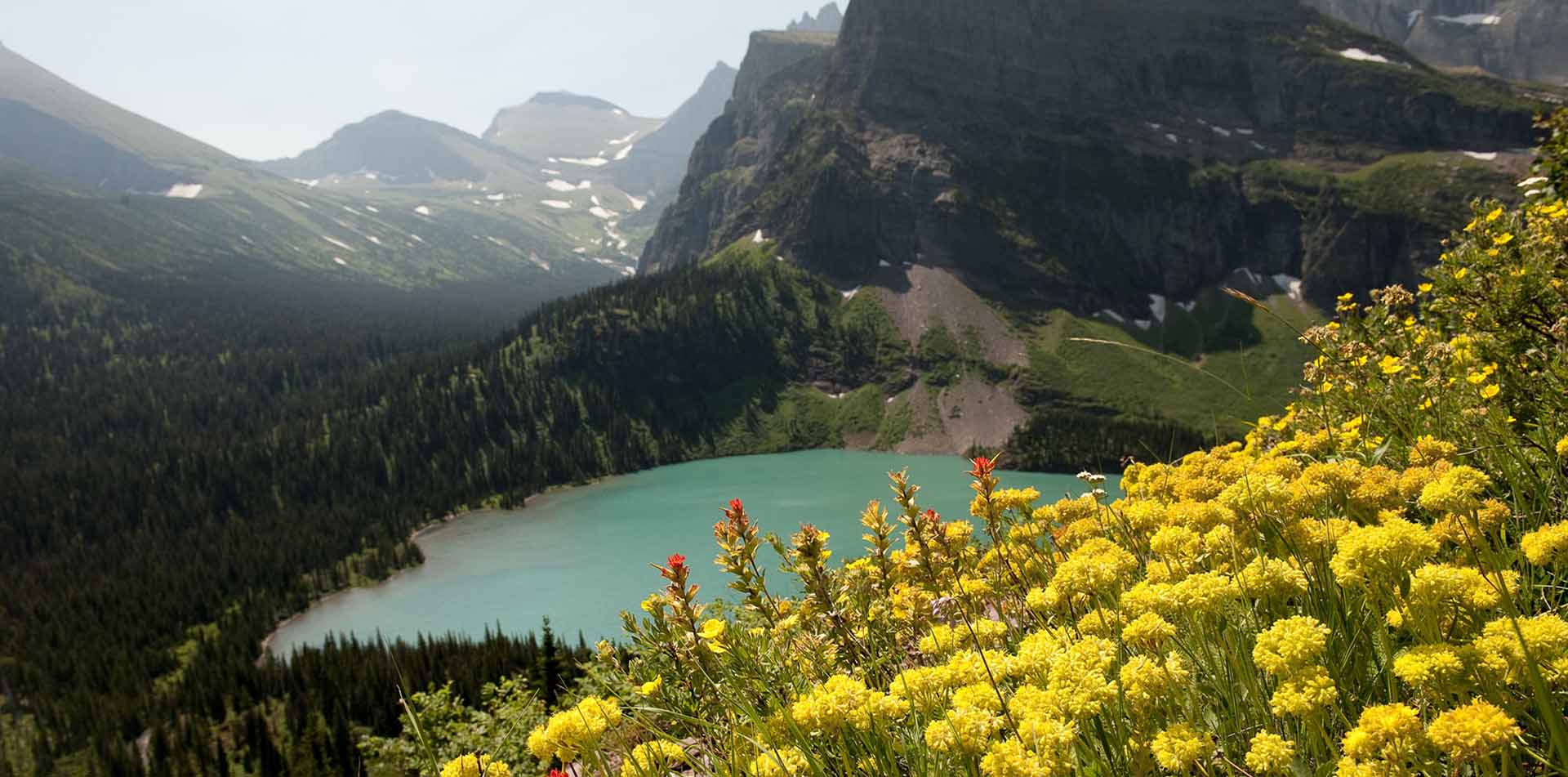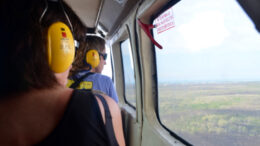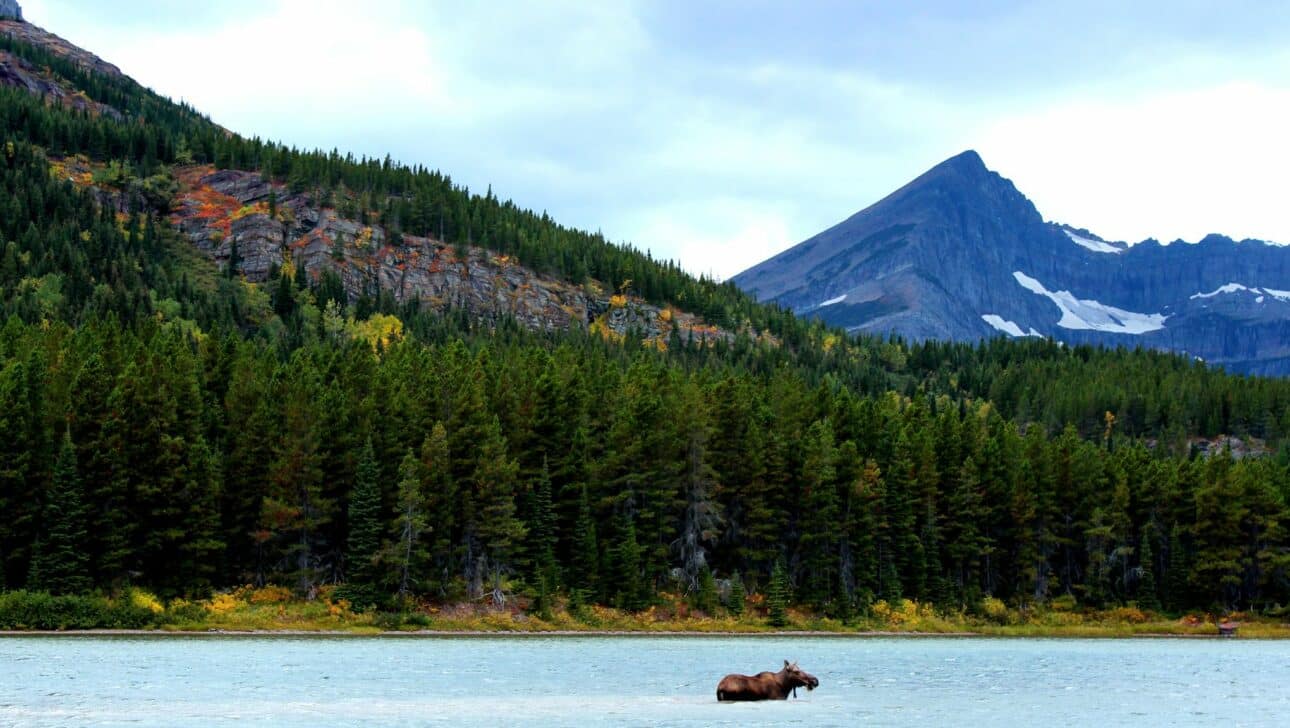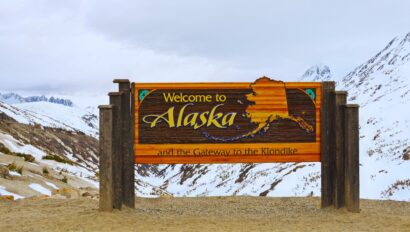There’s a reason naturalist John Muir calls Glacier National Park’s grandeur the “best care-killing scenery on the continent.” As you gaze, transfixed, by the tumbling waterfalls, crystalline lakes, hanging glaciers, rugged peaks, and wildflower-blanketed meadows, it’s easy to see why so many are enamored of the park.
We, too, are drawn to the beautiful landscapes, but Glacier National Park also woos us with wildlife, from the mighty grizzly bear to the regal eagle. Through camera lenses and binoculars, we hope to see an elusive wolf in the shadows of the forest or a mountain goat climbing along a precarious precipe. Even if you don’t see all the wildlife you envisioned as you planned your visit, the mere thought of being in the company of these unfettered creatures is somehow enough. We’re sharing their sacred space, and the more we come to appreciate it, the more we will work to protect it.
When you visit Glacier National Park with Classic Journeys, you’ll have the chance to walk the Highline Trail in search of bighorn sheep, scan the horizon for elk in St. Mary, and glimpse moose wading into the waters of Grinnell and Two Medicine lakes. Let’s meet some of the wild, wooly and wonderful animals that reside in and around Glacier National Park.
Mountain Goats
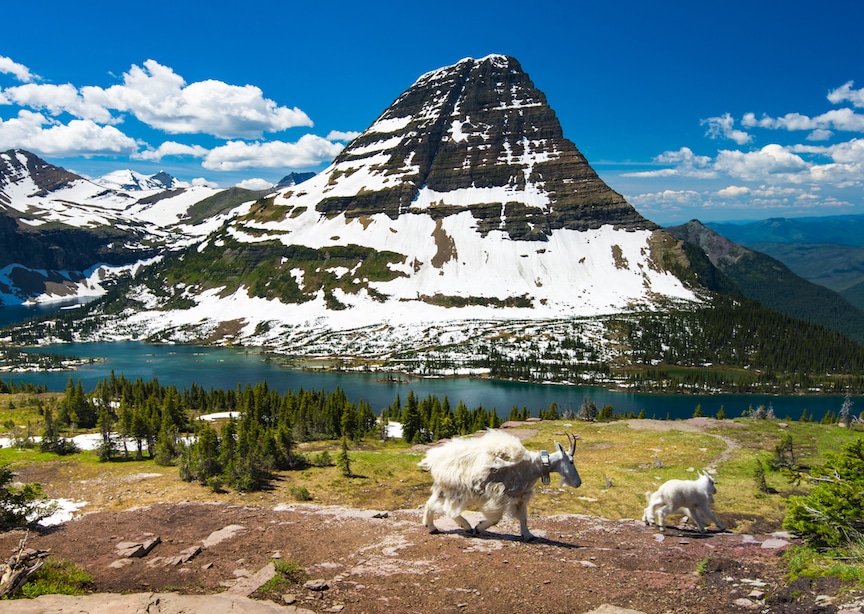
It’s likely you’ll see a mountain goat in Glacier National Park. This unofficial mascot of the Montana park is endemic to the high alpine landscapes of western North America (they’re also known as Rocky Mountain goats).
Look for their white coats, thick enough to keep them warm when the temperatures plunge in the winter (as low as (−51 °F). They’re also recognizable by their wizardly beards, short tails and long horns, which grow up to 11 inches long. Here’s the best part – these glacier-adapted goats can jump up to 12 feet!
Mountain goats can be found in the park year-round, but you may have the highest chance of spotting one in May or June. That’s when the goats gravitate toward salt licks, like those at the aptly named Goat Lick. The animals’ mineral balance is changing at that time of the year and they seek the calcium, potassium and magnesium the salt licks provide. Look for the white-bearded wanderers at the Goat Lick Overlook on Highway 2, on the riverbanks for the Middle Fork of the Flathead River, on the Hidden Lake Trail, near Logan Pass, on the Sperry Glacier Trail and on the Iceberg Lake Trail in the Many Glacier area of the park.
Moose

For a creature as large as a moose, you may not expect it to be stealthy. And yet, even a 1,000-pound male can move undetected through the forest and brush along a trail or lake. To that end, if you do suddenly happen upon one, keep your distance! They’re unpredictable and ornery.
Moose are the largest member of the deer family, distinguishable from elk by their darker color and lack of the elk’s characteristic rump. If you see antlers, it’s a male moose. These palmate-shaped, several-tined antlers continue to grow each year, reaching their prime at six years, then slowly deteriorating. Antlers are typically dropped in January, then start to regrow in April or May.
Moose love to wade with those long legs of theirs, so keep a close eye out when you’re on any kind of water in Glacier National Park. During a Classic Journeys cultural walking adventure, we look for moose as we take a steamer cruise on Grinnell Lake and hike along the shoreline. We’re also likely to see them at Two Medicine Lake, where we walk past fields of wildflowers and through broad meadows the moose call home.
Grizzly Bears
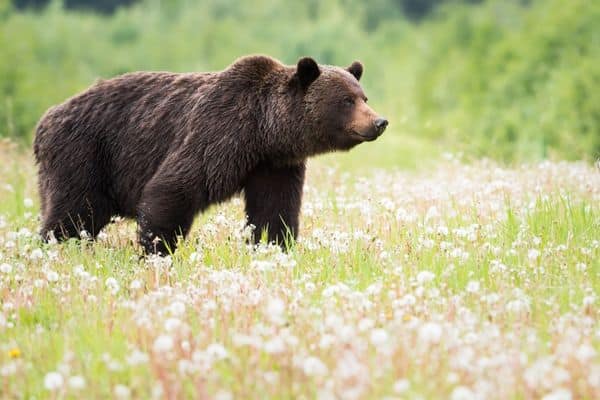
Grizzlies and brown bears are actually the same species, but the former is a subspecies of the latter. So, one can call a grizzly a brown bear, but it is not always correct to call a brown bear a grizzly.
Grizzlies can weigh up to 1,000 pounds, though the average weights are 300-440 pounds for males and 250-280 pounds for females. They’re recognizable by the large, muscular hump on their shoulders, as well as long claws (up to 4 inches long). As opposed to black bears, grizzlies have what has been described as a “dish-shaped” face instead of an elongated face.
North American grizzly bears can only be found in Montana, the Greater Yellowstone Ecosystem, parts of Idaho, and sometimes in northern Washington. Researchers believe there are nearly 300 grizzlies in Glacier. Look for them on the east side of the park during the summer months, where they spend time until returning to the high country to hibernate in the winter.
As you move through the park with your knowledgeable guide, look for grizzlies in the Logan Pass and Many Glacier area, around the Going-to-the-Sun Road and Continental Divide. Not to worry; your guide will impart their wildlife-viewing wisdom, ensuring you see these furry friends from a safe distance.
Wolves
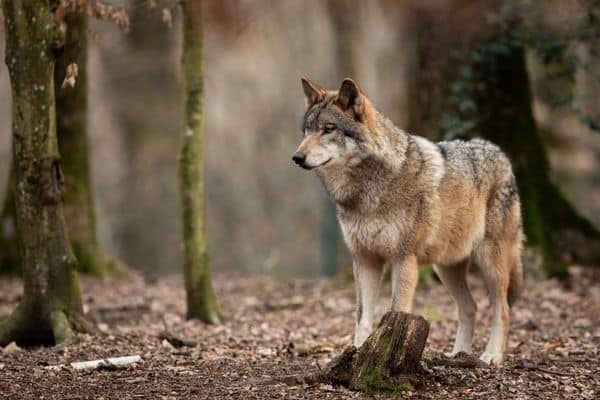
For a long time – from 1936 to the mid-1980s – Glacier National Park was free of wolves. Considered harmful and dangerous, the wolves were successfully eliminated from the park by National Park rangers.
Thankfully, however, the attitude around wolves shifted, leading to the reintroduction of gray wolves to Glacier, as well as other national parks where wolves play an important predatory role. Today, researchers believe there are six to eight packs of wolves living within the park’s boundaries.
Gray, or timber, wolves are recognizable by their long, bushy, often black-tipped tails. The wolves may not actually be gray in color; instead, their coat can range from solid white to brown to black. An average wolf is 3 to 5 feet long and their tails are 1 to 2 feet long; males weigh between 70 and 145 pounds, while females range from 60-100 pounds.
Gray wolves are notoriously elusive, so if you happen to spot one, consider yourself charmed. To increase your chances of witnessing a wolf, head to the North Fork area, home to the largest wolf population in the park. The roads here are unpaved and there are few visitor amenities, making for a quiet habitat.
Birds

Bald eagles, golden eagles, owls, and loons – they’re all found in Glacier National Park. From the stirring silhouette of a black-and-white-headed bald eagle (which really isn’t bald at all) to the haunting call of a loon at dusk, these winged wonders make the park a birders’ paradise. Listen closely as you walk – you can literally hear the wings of a gliding eagle slipping through the high mountain air.
As wilderness walkers, we have the opportunity to delve deep into nature, far from the crowds. This allows for more authentic wildlife-viewing opportunities, and in the case of birds, they’re practically everywhere! In particular, the Beaver Valley and Loop Brook trails offer excellent bird-watching. Look for dippers along Connaught Creek, which runs behind the Glacier Park Lodge, or along the Asulkan Trail. Hike above treeline on the Avalanche Crest, Abbott Ridge, Perley Rock and Hermit trails to spot the swift, strong golden eagle, white-tailed ptarmigans, water pipits, and rosy finches.
Whether they’re soaring above us or climbing rocks like a pro, Glacier National Park’s wildlife is one of its greatest treasures, from bighorn sheep and mule deer to otters and porcupines.
Are you ready to immerse yourself in their beloved habitat with us on foot? Start planning your trip of a lifetime by contacting our Travel Experience Team.
